Amakusa of the Kumamoto Prefecture is a group of rural islands blessed with nature’s beauty. Many years ago, these Islands were the site to religious wars including the Shimabara Rebellion and the purging of Christians. Now, it is a tourist destination for seaside escapades, admiring architecture, and exploring history.
Table of Contents Table of Contents
- Introduction to Amakusa
- Visiting the Historical Attractions
- Fun Activities to Enjoy
- Access to Amakusa Islands
- Takeaway
Introduction to Amakusa
Amakusa is located in southwestern Japan within the Kumamoto Prefecture of Kyushu. It is a single island but numerous, more than a hundred, small islands. Hence, it is also called Amakusa Islands and considered an archipelago.
History
The most interesting part about visiting Amakusa is undoubtedly visiting the historical sites. Therefore, it is important to at the very least know the background of its history:
Portuguese Jesuit missionary Luis de Almedia contributed to the initial spread of Christianity to Amakusa in 1566. At that time, Christianity became popular as it was practically synonymous with trade thanks to the influx of foreign missionaries. So much so that in 1589, a Christian seminary called the Colegio was set up. There were more than 200,000 Christians living in Amakusa at that time.
Things came to a head in 1614 when Christianity became banned by the Edo Shogunate. Churches were destroyed and foreign missionaries were forced to leave. The oppression and persecution that brought terror to the hearts of Christians had begun.
Shimabara Rebellion
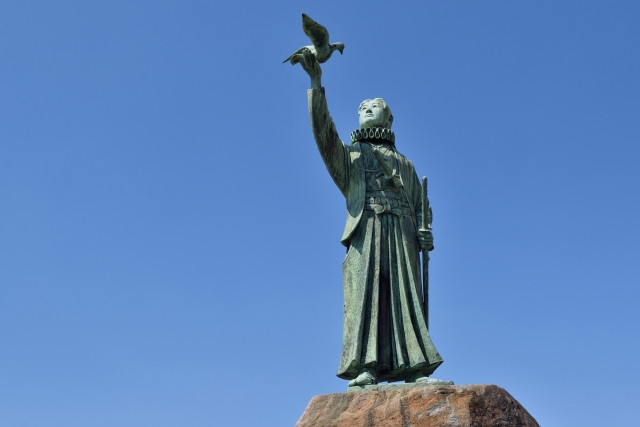
In 1618, Daimyo Matsukura Shigemasa commissioned the construction of a new castle, the Shimabara Castle 島原城. This marked the beginning of the Shimabara Rebellion. To finance the construction, Matsukura taxed the people heavily. At the same time, heavy persecution of Christians was underway. Those who failed to pay taxes or were suspected Christians were subjected to torture. Many lives were lost whether from starvation, torture, or execution.
As the saying “A cornered rat will bite the cat” goes, the years of accumulated suffering reached its boiling point in 1637. Peasants and ronin (samurai without a master) rose up in a rebellion against the upper classes and the Daimyo in Shimabara. Aside from the Shimabara locals, the people of Amakusa under the terrifying ruling of the Terazawa Clan also joined the cause. Amakusa Shiro 天草四郎, a boy of 16 years old, was one of those that joined the cause. He would later become the leader of the rebellion. The rebellion’s spark was lit by a tragic incident wherein a pregnant woman was executed horribly for her husband’s inability to pay taxes. The rebellion led by Amakusa Shiro stormed Shimabara Castle and Tomioka Castle.
Unable to overpower the enemy, the rebels took shelter in Hara Castle’s remains. Altogether they were a group of 37,000 waiting for reinforcements from the Portuguese. Unfortunately, the Tokugawa Shogunate now considered them a significant threat. A large overwhelming force of more than 100,000 soldiers were sent. Hara Castle turned out to be a formidable impenetrable fortress as the rebels managed to fend off attacks for 3 months. Ultimately, it was the lack of provisions and betrayal by Yamada Uemonsaku that did the rebels in. The traitor in exchange for his life became an informer to the enemy. With the knowledge that the rebels were weak from hunger, the Shogunate gathered together for a final full force assault.
The rebels fell on 12 April 1638. Aside from Yamada Uemonsaku, no one was spared and Amakusa Shiro was beheaded. Hara Castle was also destroyed and dismantled. To prevent this reoccurence, the Sakoku aka Isolation Policy was enacted which effectively cut off Japan from the rest of the world. Amakusa was also thoroughly purged of Christians.
Recovery and Hidden Christians
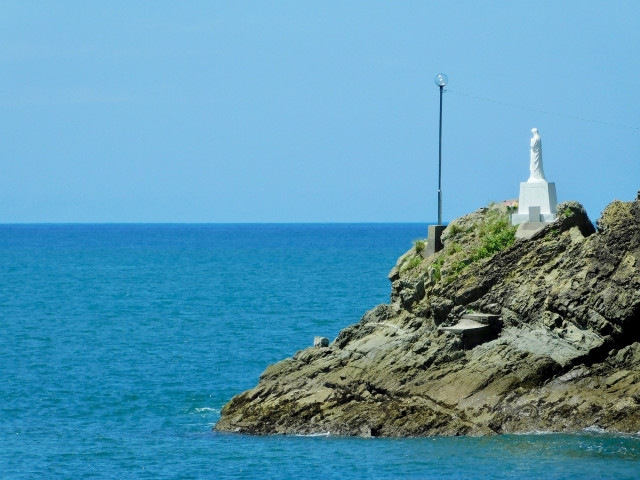
Amakusa came under direct ruling of the Edo Government. From 1641, Suzuki Shigenari was assigned to be the local governor. He made significant changes to bring back peace to the devastated Amakusa including building temples and shrines by reducing his own salary and speaking out for the people despite endangering himself.
For 250 years, the hidden Christians of Amakusa would pretend to be Buddhists whilst secretly practicing their Christian faith. Their efforts included disguised statues of Mary, hidden altars, and hidden crosses. It wasn’t until 1873 when the Christianity ban was lifted.
※ Amakusa Treasure Island Tourism Association, "Amakusa: Land of Living Faith" ※ Amakusa City Tourism, “Sakitsu Village in Amakusa” ※ Minami Shimabara City, “Chapter 7 - Light and Shadow: Christian History, Resurrected. The Shimabara-Amakusa Uprising- Tragedy for 37,000”
Geography and Climate
The three biggest islands of Shimoshima 下島, Kamiamakusa 上天草 and Oyano 大矢野 are the main areas to visit on Amakusa Islands. These islands are connected together, and to Kumamoto Prefecture, by Amakusa Gokyo 天草五橋 (Amakusa Five Bridges).
As a far western Japan Island, Amakusa’s climate is typical of its area. This means subtropical climates of high temperatures and plenty of rainfall. Temperatures are no higher than 30°C in peak summer, and no lower than 5°C in peak winter.
※ Encyclopædia Britannica, Inc., "Amakusa Islands" ※ Climate Data, "Climate Amakusa (Japan)"
Writer's Pick
Visiting the Historical Attractions
Now that you know the history of Amakusa, you’re better equipped to appreciate the historical sites the Island has to offer:
Myotoku-ji
Myotoku-ji 明徳寺 is the first Buddhist temple to be built in Amakusa. The temple was established after the Shimabara Rebellion to spread Buddhism. Upon the temple’s Sanmon 山門 (an important gate found in Zen Buddhist temples) is an engraved message along the lines of “spread Buddhism teachings, destroy Christian heresy”. In addition, the stone steps leading to the temple have crosses carved into them. This is to reinforce the fumi-e system, a method of sussing out Christians by making them step on their religious symbol. At the bottom of the stairs is a Jizo statue, different from the usual Jizo statues around Japan, as this one has very distinct foreign features.
Oe Cathedral
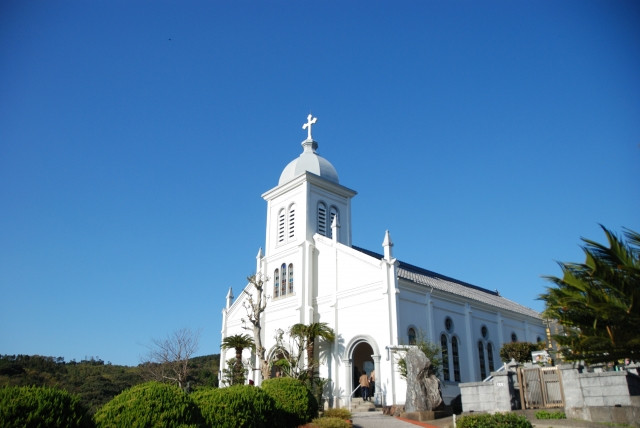
Oe Cathedral , or Oe Tenshudo 大江天主堂, is the first church to be built after the Christian ban was lifted in 1873. Located at the top of the hill, the beautiful pristine whiteness of the Cathedral is a sight to behold, especially on a clear blue sky day. The uphill path to the church is lined with green pastures and beautiful blossoms. The entire area looks like somewhere out of Europe.
The original church is long gone, and the present Romanesque structure was constructed in 1933 by Father Garnier, a French missionary.
Sakitsu Catholic Church
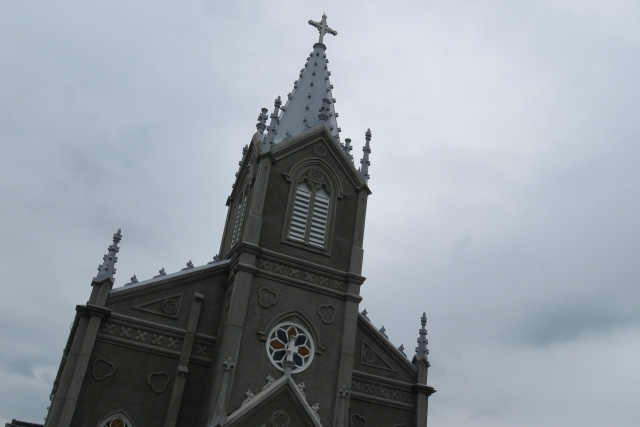
Sakitsu Catholic Church is located in Sakitsu Village, one of 12 UNESCO World Heritage Sites collectively known as the “Hidden Christian Sites in the Nagasaki Region”.
Sakitsu was one of the places wherein the villagers hid their Christian faith, thus the term “Hidden Christians”. They did so for 250 years until the Christian ban was lifted. The original Sakitsu Church was a wooden construction made in 1888 as one of the earliest churches since the ban lifting. It replaced the previous village leader’s home where fumi-e was frequently performed.
The current Gothic-style Sakitsu Catholic Church was established by Father Augustin Halbout in 1934. It has tatami floors which is a rarity.
※ UNESCO, “Hidden Christian Sites in the Nagasaki Region”
Martyrdom Park
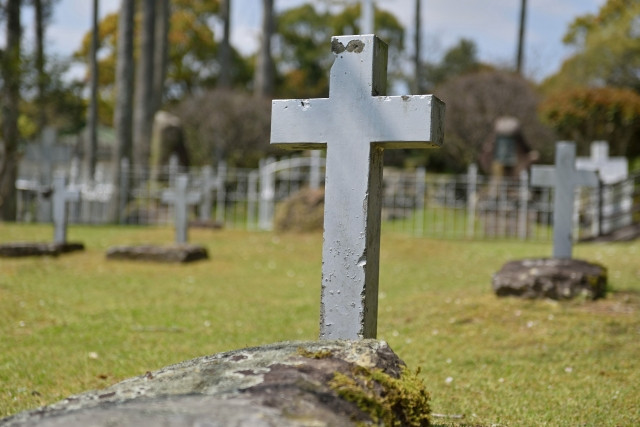
Also known as Shiroyama Park 城山公園, was established in remembrance of those who lost their lives during the Shimabara Rebellion including one thousand martyrs. This was where the former Hondo Castle stood in all its glory. The park is now home to around 70 cherry blossom trees, monuments, tomb mounds, and the Amakusa Christian museum. When spring comes around and the sakura are in full bloom, plenty of visitors come for hanami.
Amakusa Christian Museum
Amakusa Christian Museum exhibits the spread of Christianity in not only Amakusa but the Kyushu area as well. From anecdotes and documents about the Shimabara Rebellion to relics that belonged to the Hidden Christians, and even the Flag of Amakusa Shiro; it’s the best place to visit to really get an in-depth history lesson on the Shimabara Rebellion.
Entrance Fee: 300 yen (Adult)
Closed on Tuesdays.
Note: Information is mostly in Japanese.
Shiro Amakusa Museum
Another museum to visit, this time with a focus on the rebels’ young leader Amakusa Shiro (if the museum name isn’t obvious enough). Uncover the history of this courageous young man, from the Christian prophecies that a saviour would come in the form of a “Child of God” and finally to his tragic end at the failed rebellion.
Entrance Fee: 600 yen (Adult)
Closed on 2nd Wednesdays in January and June.
Tomioka Castle Ruins
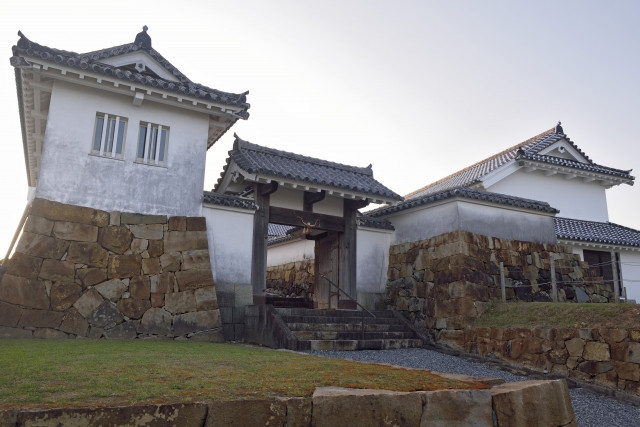
Tomioka Castle was built during the Edo Period when Amakusa Domain was still controlled by the Tokugawa Shogunate. It is a historical spot where the rebels valiantly fought after their battle at Hondo Castle (above Martyrdom Park) before crossing the sea to Hara Castle where they made their last stand.
Adjacent to the castle ruins is a museum where you can learn about Amakusa and the castle’s history for 100 yen.
Tomioka Castle Ruins is located on Tomioka Island reachable by ferry.
※ MLIT, "Travel Guide of Scenic Byway Kyushu," p.3
Fun Activities to Enjoy
If you find the historical attractions not to your taste, don’t worry as Amakusa is home to plenty of other fun exciting things:
Walk along White Crane Beach

Shiratsuru-hama 白鶴浜 is one of 100 proud beaches in Japan that have been shortlisted for being the nicest. Its 1.3km stretch of white sands resembles the spread wings of a crane, thus its apt name. There are plenty of water activities to enjoy here including swimming and jet skiing.
※ Ministry of Environment, "Top 100 Beaches in Japan: Shiratsuruhama"
Friendly Visit by Dolphins
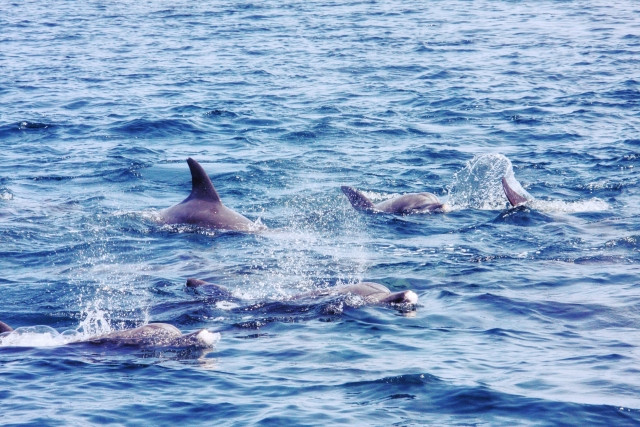
Amakusa is hands down one of the best places in the world to meet our lovely dolphin friends. Dolphin watching is available at all times in Amakusa. Unlike other places where you’ll need to pray really hard to catch a sight of a dolphin, Amakusa has a high 90% (some claim 95%!!) chance encounter. This is a really popular activity so we recommend booking ahead of time.
※ Amakusa Dolphin Watching General Information Centre ※ Kumamoto Guide, “Amakusa Dolphin Watching”
Catching a View of the Sunset
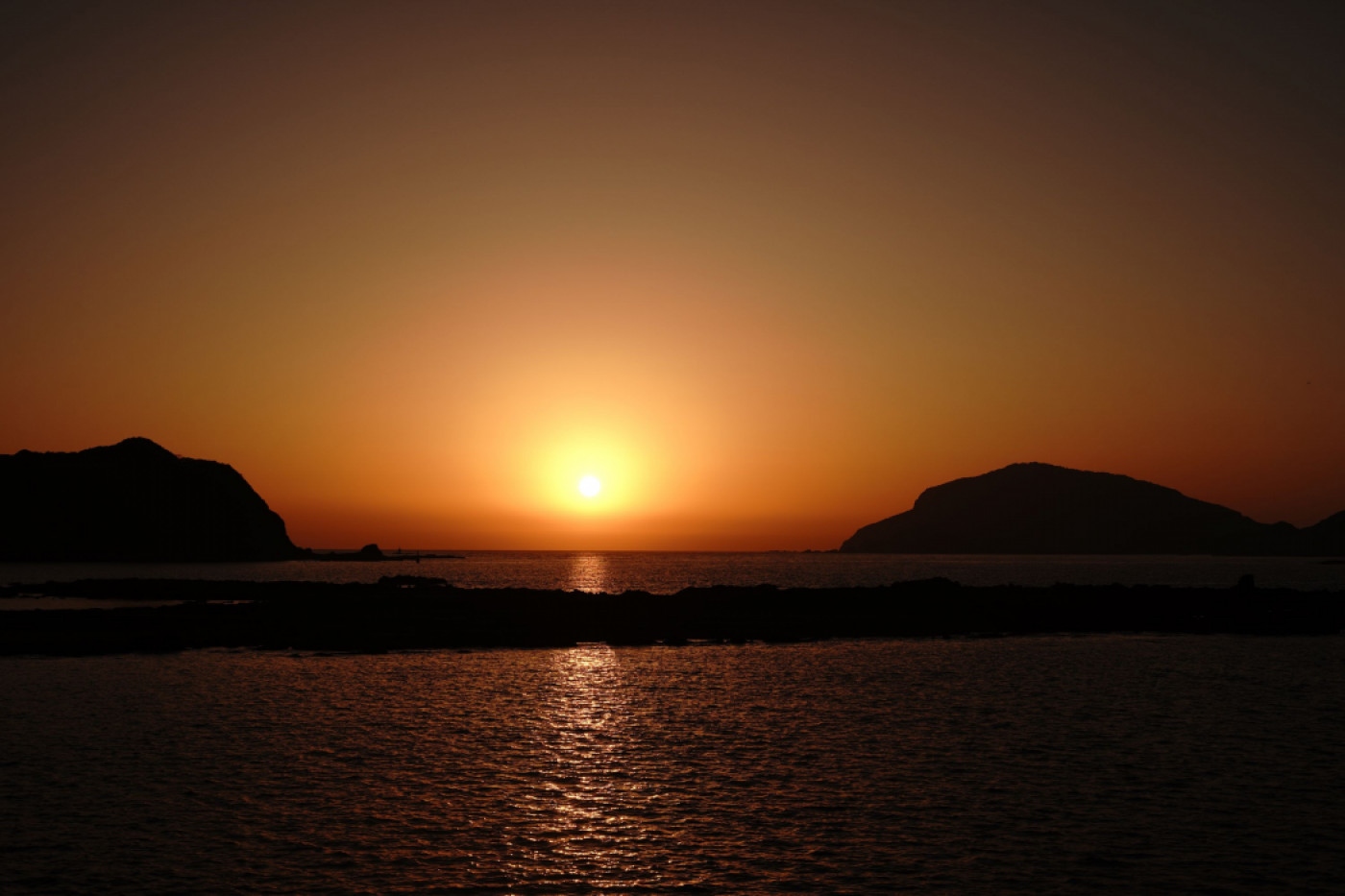
Amakusa is a great spot to capture great shots of the sunset. Particularly the Sunset Line that faces the west. Here are some places to visit and get snapping:
-
Kikaigaura Observation Deck 鬼海ケ浦展望所
-
Mogushi Beach 茂串海水浴場 - Visit in May - June for sea turtle egg laying
-
Mt. Takabuto Observatory: One of the 100 Sunset Views of Japan
-
Nishihira Camellia Park 西平椿公園: One of the 100 Sunset Views of Japan
-
Sakitsu Church’s Statue of Mary on the Ocean: One of
8 Sunsets of Amakusa
※ JNTO, “Kumamoto | Sunsets of Amakusa, Kumamoto”
Have a Taste of Seafood
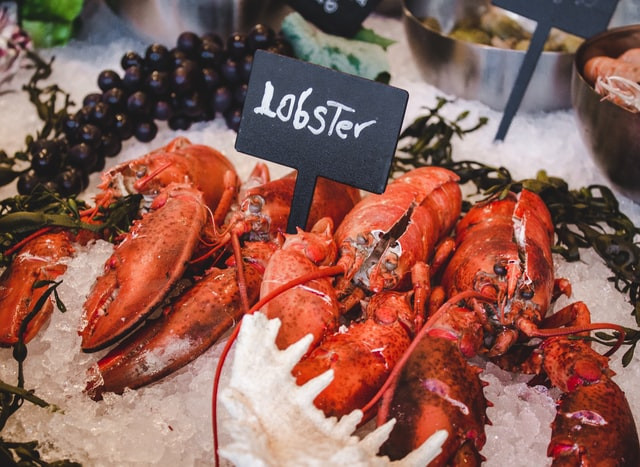
After a long trip of sightseeing, there’s nothing better to do than stuffing yourself with Amakusa’s seafood. From lobsters, abalone, octopus to shrimp and pufferfish, they offer only the freshest.
If you're lucky, or good at planning, you can visit during one of the famous gourmet fairs around Amasuka like:
-
Ushibuka Lobster Fair - August to December
-
Amakusa Abalone Fair - September to December
-
Goshoura Bukkin Fair - November to March
Goshoura Bukkin includes pufferfish, or fugu in Japanese.
Access to Amakusa Islands
There are 3 ways to get to Amakusa; by air, ferry, car, bus or shinkansen.
By Air with Amakusa Airlines
Amakusa Airlines offers direct flights to Amakusa from Fukuoka, Kumamoto and Osaka. Check the website for fares and latest flight information.
By Shinkansen
From Shin-Osaka, take the Tokaido Sanyo Shinkansen which directly links to the Kyushu Shinkansen to Kumamoto Station (3.5 hours). From here, take the Kyushu Sanko Bus to Amakusa (2.5 hours). This should cost around 20,000 yen.
It is possible to make this trip from Tokyo as well but would take roughly an additional 2 hours and 10,000 yen.
By Ferry
Many ferry services travel from the mainland to Amakusa:
From Nagasaki
Shimatetsu Ferries operates trips from Nagasaki’s Kuchinotsu Port to Amakusa’s Oniike Port. Each trip is around 30-mins. Adult one-way fares are 390 yen. You can also ferry private vehicles across for a fee.
※ Shimabaratetsudou KK, “Shimatetsu Ferries Timetables/Fares”
From Kagoshima
Sanwa Ferry operates trips from Kagoshima Nagashima’s Kuranomoto Port to Amakusa’s Ushibuka Port. Each trip is around 30-mins. Adult one-way fares are 500 yen, roundtrip is 950yen. You can also ferry private vehicles across for a fee.
※ Sanwa Ferry, “Timetable/Fares”
Takeaway

Amakusa is a one-of-a-kind destination in Japan. Explore this beautiful island and learn about its great history. Definitely worth visiting for historians, it is also a touching experience for those of the Christian faith. There is also plenty of nature to explore with up close interactions with dolphins, best sunsets to admire in Japan, and stretches of white sandy beaches. Let’s not forget the scrumptious seafood delights waiting for you.


















.jpg)












